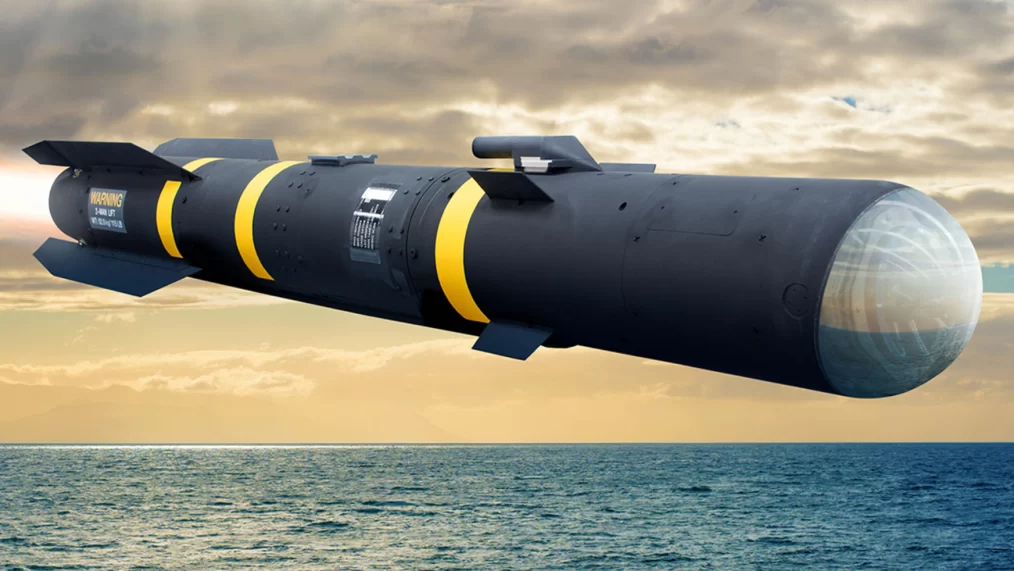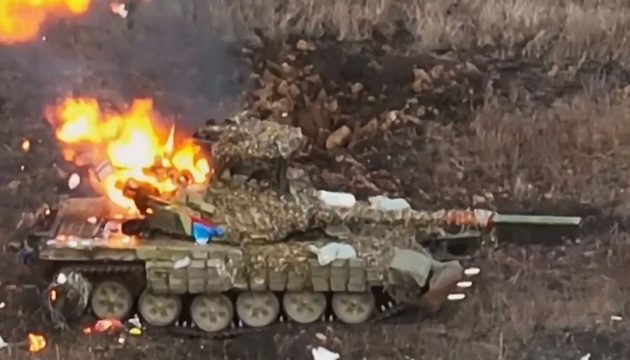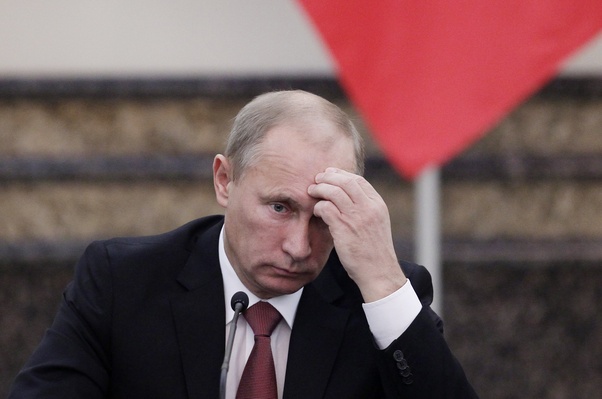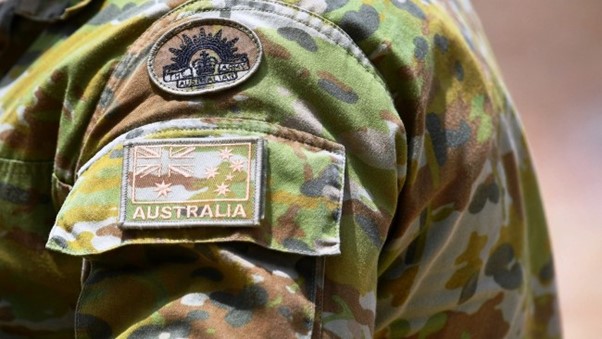1st Battalion, Royal Australian Regiment (1 RAR) is a regular motorised infantry battalion of the Australian Army. 1 RAR was first formed as the 65th Australian Infantry Battalion in 1945 and since then has been deployed on active service during the Korean War, the Malayan Emergency, the Vietnam War and more recently in Somalia, East Timor, Iraq and Afghanistan. Additionally, the battalion has deployed on peacekeeping operations to a number of countries including Japan, East Timor and the Solomon Islands. In 2006, 1 RAR was one of the Australian Army’s most heavily deployed units sending detachments to Iraq as part of SECDET, Tonga, the Solomon Islands and Timor Leste. The battalion is currently based at Townsville, Queensland, where it forms part of the 3rd Brigade.
Summary of IPA research:
New research by the Institute of Public Affairs (IPA) reveals a growing crisis in Australia’s national identity. The traditional “Australian Dream”—owning a home, raising a family, and achieving stable employment—is rapidly fading, leaving younger generations feeling disconnected and disillusioned. Meanwhile, older Australians, especially the Baby Boomers, accuse the youth of being ungrateful and unwilling to protect the country’s interests. These generational divides expose deeper cultural shifts that threaten the fabric of the nation.
The “Australian Dream” once symbolized prosperity: a home on a quarter-acre block, a steady job, and the chance to take a yearly holiday. However, for many younger Australians, this ideal feels like a lie sold by their parents—a goal that’s unattainable. They face rising housing costs, limited job opportunities, and increasing economic pressures.
Meanwhile, older generations, particularly those who lived through the post-World War II boom, see the younger population as entitled and unmotivated to continue the traditions and values they hold dear. The post-war era, often seen as a “Golden Age” for Australia and much of the West, offered economic stability and growth. But today, those same opportunities seem out of reach for many young Australians, who are instead grappling with skyrocketing house prices and stagnant wages.
A key point of contention between generations is the question of national defence. The IPA’s poll, titled Defending Australia’s Way of Life, uncovers a troubling trend: less than half of Australians would stay and fight if the country were attacked. This statistic is particularly shocking given the global context of the Ukraine crisis, where we’ve seen ordinary citizens rally to defend their homeland.
Only 46% of Australians say they would stay and fight, while 30% would flee, and 24% remain undecided. Younger generations are particularly reluctant to defend the country. Among 18-24 year-olds, just 27% would stay and fight, with 48% preferring to leave. In contrast, 48% of the 35-44 age group would fight, showing that older generations are more willing to defend Australia.
Daniel Wild, deputy executive director at the IPA, attributes this to the cultural and educational decline, where young Australians are “ashamed of themselves and their country.” He believes the national curriculum is to blame for this loss of patriotic spirit, arguing that it needs to be reformed to instill pride in Australia’s values and history.
Beyond issues of national pride, young Australians face significant economic challenges that further erode their investment in the country. The collapse of the housing market and the rise in precarious employment have made it difficult for them to achieve the stability their parents once enjoyed.
Matt Barrie, a tech entrepreneur, highlighted the dire situation in Sydney’s housing market, where it now takes an average of 46 years to save for a house deposit. This reality feeds into the broader sense of disillusionment. For many young Australians, it feels as though the system has failed them, with few prospects for owning a home or finding long-term, meaningful work.
The erosion of Australia’s industrial base and the shift toward a service-based, “knowledge” economy has only worsened the situation. The rise of automation and artificial intelligence threatens to further reduce job opportunities, while mass migration adds pressure to wages and housing affordability. In this context, it’s no surprise that many young people feel disconnected from the nation and its future.
These economic and social pressures compound a broader sense of dislocation that is pervasive in Australia. Both young and old Australians feel that the country is on a trajectory of “managed decline”—a steady but deliberate erosion of its global standing and internal stability.
David Llewellyn-Smith, chief strategist at MB Super, argues that Australia’s economic policy, particularly its reliance on migration to sustain growth, benefits sectors like banking, retail, and property development at the expense of the general population. As a result, living standards are falling, and productivity is declining. AMP’s chief economist Shane Oliver reinforces this point, noting that while migration increases the tax base, it hasn’t resulted in a rise in living standards per person.
How can Australia restore the faith of its younger generations and foster a sense of national pride? Reforming the education system is one part of the solution. Wild argues that the national curriculum should emphasize Australia’s positive contributions to the world and its status as one of the most tolerant and democratic nations on earth. Only by instilling pride in the country can Australia expect its citizens to defend it in times of crisis.
However, education reform alone won’t solve the deeper economic issues. To reverse the trend of disillusionment, Australia needs to provide meaningful employment opportunities and make homeownership attainable again. Rebuilding the industrial base and fostering innovation could help create jobs that young Australians find fulfilling and worthwhile.
Moreover, addressing housing affordability by controlling demand through more strategic migration policies and ensuring that wages keep pace with the cost of living could restore faith in the possibility of the Australian Dream.
Australia is at a crossroads. The country can either continue down the path of managed decline—where economic opportunities dwindle, and cultural disconnection deepens—or it can take bold steps to reinvest in its people and its future. Policymakers need to acknowledge the frustrations of young Australians and address the root causes of their disillusionment.
If the country fails to act, the generational divide will only worsen, with younger Australians feeling even less connected to the nation’s future. The risk is not just an economic or cultural decline but a loss of Australia’s global standing and influence in an increasingly competitive world.
Ultimately, the question Australia faces is whether it wants to be a nation of steady decline or a thriving, competitive society that offers its citizens a real stake in its future. The choice is clear, but it requires action—now.
This is certainly another point of view and unfortunately is true BUT what the hell do we do as sympathetic human beings. We are creating a worse scenario.
Great dilemma…
Kevin Myers (born 30 March 1947) is an Irish journalist and writer. He writes for the Irish edition of the Sunday Times, having previously been a columnist for the Irish Independent and a former contributor to The Irish Times, where he wrote the “An Irishman’s Diary” opinion column several times weekly. Until 2005, he wrote for the UK Sunday Telegraph. His articles criticize left-wing opinion and the “liberal consensus”, sometimes incorporating hyperbole, sarcasm and parody.
This essay appeared in The Irish Independent:
Somalia is not a humanitarian disaster; it is an evolutionary disaster. The current drought is not the worst in 50 years, as the BBC and all the aid organizations claim. It is nothing compared to the droughts in 1960/61 or 73/74. And there are continuing droughts every 5 years or so. It’s just that there are now four times the population; having been kept alive by famine relief, supplied by aid organizations, over the past 50 years. So, of course, the effects of any drought now, is a famine. They cannot even feed themselves in a normal rainfall year.
Worst yet, the effects of these droughts, and poor nutrition in the first 3 years of a child’s life, have a lasting effect on the development of the infant brain, so that if they survive, they will never achieve a normal IQ . Consequently, they are selectively breeding a population who cannot be educated, let alone one that is not being educated, a recipe for disaster
We are seeing this impact now, and it can only exacerbate, to the detriment of their neighbours, and their environment as well. This scenario can only end in an even worse disaster, with even worse suffering, for those benighted people, and their descendants. Eventually, some mechanism will intervene, be it war, disease or starvation.
So, what do we do? Let them starve? What a dilemma for our Judeo/Christian/Islamic Ethos; as well as Hindu/Buddhist morality. And this is beginning to happen in Kenya, Ethiopia and other countries in Asia, like Pakistan. Is this the beginning of the end of civilization?
AFRICA is giving nothing to anyone outside Africa — apart from AIDS and new diseases. Even as we see African states refusing to take action to restore something resembling civilization in Zimbabwe, the begging bowl for Ethiopia is being passed around to us out of Africa, yet again. It is nearly 25 years since the famous Feed the World campaign began in Ethiopia, and in that time Ethiopia’s population has grown from 33.5 million to 78+ million today. So, why on earth should I do anything to encourage further catastrophic demographic growth in that country? Where is the logic? There is none. Now they want to move to other countries to continue to breed and commit crime.
To be sure, there are two things saying that logic doesn’t count. One is my conscience, and the other is the picture, yet again, of another wide-eyed child, yet again, gazing, yet again, at the camera, which yet again, captures the tragedy of children starving.
Sorry. My conscience has toured this territory on foot and financially. Unlike most of you, I have been to Ethiopia; like most of you, I have stumped up the loot to charities to stop starvation there. The wide-eyed boy-child we saved, 20 years or so ago, is now a low IQ, AK 47-bearing moron, siring children whenever the whim takes him and blaming the world because he is uneducated, poor and left behind. There is no doubt a good argument why we should prolong this predatory and dysfunctional economic, social and sexual system but I do not know what it is. There is, on the other hand, every reason not to write a column like this. It will win no friends and will provoke the self-righteous wrath of, well, the self-righteous hand wringing, letter writing wrathful individuals; a species which never fails to contaminate almost every debate in Irish life with its sneers and its moral superiority. It will also probably enrage some of the finest men in Irish life, like John O’Shea, of Goal; and the Finucane brothers, men whom I admire enormously.
So be it.
But, please, please, your self-righteously wrathful, spare me mention of our own Irish Famine, with this or that lazy analogy. There is no comparison! Within 20 years of the Famine, the Irish population was down by 30%. Over the equivalent period, thanks to western food, the Mercedes 10-wheel truck and the Lockheed Hercules plane, Ethiopia’s population has more than doubled.
Alas, that wretched country is not alone in its madness. Somewhere, over the rainbow, lies Somalia, another fine land of violent, AK 47-toting, khat-chewing, girl-circumcising, permanently tumescent layabouts and housing pirates of the ocean. Indeed, we now have almost an entire continent of sexually hyperactive, illiterate indigents, with tens of millions of people who only survive because of help from the outside world or allowances by the semi-communist Governments they voted for, money supplied by borrowing it from the World Bank!
This dependency has not stimulated political prudence or common sense. Indeed, voodoo idiocy seems to be in the ascendant, with the president of South Africa being a firm believer in the efficacy of a little tap water on the post-coital penis as a sure preventative against AIDS infection. Needless to say, poverty, hunger and societal meltdown have not prevented idiotic wars involving Tigre, Uganda, Congo, Sudan, Somalia, Eritrea etcetera.
Broad brush-strokes, to be sure. But broad brush-strokes are often the way that history paints its gaudier, if more decisive, chapters. Japan, China, Russia, Korea, Poland, Germany, Vietnam, Laos and Cambodia in the 20th century have endured worse broad brush-strokes than almost any part of Africa. They are now — one way or another — virtually all giving aid to or investing in Africa, whereas Africa, with its vast Savannahs and its lush pastures, is giving almost nothing to anyone, apart from AIDS.
Meanwhile, Africa’s peoples are outstripping their resources and causing catastrophic ecological degradation. By 2050, the population of Ethiopia will be 177 million; the equivalent of France, Germany and Benelux today, but located on the parched and increasingly Protein-free wastelands of the Great Rift Valley. So, how much sense does it make for us actively to increase the adult population of what is already a vastly over-populated, environmentally devastated and economically dependent country?
How much morality is there in saving an Ethiopian child from starvation today, for it to survive to a life of brutal circumcision, poverty, hunger, violence and sexual abuse, resulting in another half-dozen such wide-eyed children, with comparably jolly little lives ahead of them?
Of course, it might make you feel better, which is a prime reason for so much charity!
But that is not good enough. For self-serving generosity has been one of the curses of Africa. It has sustained political systems which would otherwise have collapsed. It prolonged the Eritrean-Ethiopian war by nearly a decade. It is inspiring Bill Gates’ programme to rid the continent of malaria, when, in the almost complete absence of personal self-discipline, that disease is one of the most efficacious forms of population-control now operating. If his programme is successful, tens of millions of children who would otherwise have died in infancy will survive to adulthood, he boasts.
Oh good: then what? I know, let them all come here (to Ireland). Germany and the rest of Europe is already inundated and there are literally millions queuing up who want a hand out, taking in refugees because you feel sorry for them will end in the demise of those countries taking part.
You will note that; No Gulf State is taking any refugees, and the head of the human rights commission is Saudi Arabian!?!
Regards
Kevin Myers
Acknowledgement
I acknowledge the early settlers who came to this land, which had stood undeveloped for over 50,000 years and over only several hundred years, transformed this land to one of the richest and most liveable countries on Earth.
So together, let’s all enjoy and build on the legacy they have given us.
From 20 September 2024, some veterans and their families will receive an increase to their DVA pension and compensation payments in line with increases to the cost of living. You don’t have to do anything to receive the increase, it will automatically be applied to your payment.
The first full payment at the new rates will be payday 17 October 2024.
The pension for payday 3 October covers entitlements for the period 17 September 2024 to 30 September 2024 and will be paid partly at the old rate and partly at the new rate.
The maximum rate of single service pension will rise by $28.10 to $1,144.40 per fortnight and the maximum rate for couples will increase by $21.20 to $862.60 per fortnight (each).
The Special Rate of Disability Compensation Payment (T&PI payment) will increase by $45.30 to $1,805.30 per fortnight. The Extreme Disablement Adjustment (EDA) rate will increase by $24.40 to $974.20 per fortnight and the 100 per cent General Rate of Disability Compensation Payment will increase by $15.70 to $626.70 per fortnight.
The pension paid to war widow(er)s will increase by $29.00 to $1,165.30 per fortnight (including the energy supplement), while the ceiling rate of the income support supplement will rise to $346.20 per fortnight.
Certain benefits under the Military Rehabilitation and Compensation Act 2004 (MRCA) will also increase. The weekly MRCA wholly dependent partner payment will increase by $14.50 to $582.65. This is paid fortnightly ($1,165.30).
The indexation factor used to index pension and compensation payments each March and September can be based on either the Consumer Price Index (CPI), the Pensioner and Beneficiary Living Cost Index (PBLCI) or Male Total Average Weekly Earnings (MTAWE). For 20 September 2024, the indexation was driven by PBLCI.
For more information on the new pension and compensation rates, call 1800 VETERAN (1800 838 372).
New pension and compensation rates from 20 September 2024
| SERVICE PENSION | Old rate (fortnightly) | New rate (fortnightly) | Increase (fortnightly) |
| Single person | $1,116.30 | $1,144.40 | $28.10 |
| Couples (each) | $841.40 | $ 862.60 | $21.20 |
| Single person – transitional | $922.90 | $941.10 | $18.20 |
| Couples (each) – transitional | $744.60 | $759.30 | $14.70 |
| WAR WIDOWS (total amount) | |||
| War widow(er)’s pension | $1,136.30 | $1,165.30 | $29.00 |
| Income support supplement (ceiling rate) | $337.40 | $346.20 | $8.80 |
| DISABILITY COMPENSATION PAYMENT (total amount) | |||
| T&PI (Special rate) | $1,760.00 | $1,805.30 | $45.30 |
| Intermediate rate | $1,166.80 | $1,196.80 | $30.00 |
| EDA | $949.80 | $974.20 | $24.40 |
| 100 per cent (inc ES) | $611.00 | $626.70 | $15.70 |
| 10 per cent (inc ES) | $68.03 | $69.60 | $1.57 |
| Veteran Payment | |||
| Single person | $1,211.20 | $1,242.20 | $31.00 |
| Couples (each) | $944.50 | $968.70 | $24.20 |
| MRCA* | |||
| Wholly dependent partner payment | $1,136.30 | $1,165.30 | $29.00 |
| Special Rate Disability pension (SRDP) | $1,760.00 | $1,805.30 | $45.30 |
These are the maximum rates of payment and include any Energy Supplement payable.
The first full payment at the new rates will be the payday 17 October 2024.
*Note that the MRCA payments in the bottom two rows are the fortnightly amounts, not the weekly amounts.
Current and historical pension and compensation rates are available on the CLIK website.
Picture: Concept art of a Lockheed Martin JAGM flying over water. (Lockheed Martin)
Lockheed Martin is preparing for a live-fire demonstration of its Joint Air-to-Ground Missile (JAGM) vertical launch system next year, as part of its strategy to develop a family of “multi-domain missile systems.” The company aims to offer this advanced weaponry to both the US and Australia.
At the recent Land Forces exhibition in Melbourne, Australia, Lockheed Martin revealed a model resembling the US Navy’s MkVI Patrol Boat, equipped with four JAGM Quad Launchers (JQLs). This vertical launch system is designed to deploy JAGM missiles from surface vessels and ground vehicles, such as the Joint Light Tactical Vehicle.
The JAGM incorporates the warhead of the AGM-114R Hellfire Romeo and integrates additional multi-mode seekers, including millimetre wave (MMW) radar for fire-and-forget capabilities. This enables it to engage multiple moving targets, such as slow-moving aircraft, helicopters, and unmanned aerial systems (UAS).
If integrated on surface vessels, this would mark JAGM’s first maritime deployment. Currently, its predecessor, the AGM-114 Longbow Hellfire, is used on US Navy Littoral Combat Ships (LCS) in the Middle East for countering small surface threats.
Lockheed Martin sees future applications of the JAGM system for engaging unmanned surface and aerial threats, which have become prominent in regions like the Red Sea. The company is also promoting JAGM to international partners, including the Australian Defence Forces (ADF), with plans to equip the ADF’s incoming AH-64E Apache helicopters.
The JAGM Medium Range (MR) variant, still in development, promises to double the missile’s range to 16 kilometres, and could be integrated into Australia’s Land 8710 Littoral Manoeuvre Vessel program for over-the-beach fire support.
Figures as at 19th September 2024
Russia suffered about 632,630 casualties in Ukraine between February 24, 2022 and September 19, 2024, including 1,130 soldiers killed or wounded in action in the past 24 hours.
The General Staff of the Ukrainian Armed Forces said this in a post on Ukrinform reports.
Since the war began in February 2022,
Ukraine’s defence forces have destroyed 8,705 Russian tanks ( + 14 in the past 24 hours),
- 17,093 (+13) armoured fighting vehicles,
- 18,177 (+23) artillery systems,
- 1,189 (+1) multiple rocket launchers,
- 947 anti-aircraft warfare systems, and 2,592 cruise missiles.
- The Russian army also lost 369 warplanes, 328 helicopters,
- 15,417 (+63) tactical unmanned aerial systems,
- 28 warships/cutters,
- 1 submarine, 24,839 (+55) vehicles and fuel trucks, and
- 3,109 pieces of special equipment.
Figures on enemy losses are being verified.
By Robert Castle – Quora
Afraid as any man would be when death is on his doorstep.
To reveal the fate of Russia and the demise of Putin you only have to look at Germany post WW2 to see what will happen in the near future. (minus the German Economic Miracle)
Russia is in shambles.
Economy, infrastructure, finance; all are in tatters and were in deplorable condition BEFORE the Ukraine invasion. Some semblance, even a hollowed-out shell, of prior institutions that can somewhat be resurrected after a national calamity or war needs to be present to even get a glimmer of recovery.
Germany recovered (not considering the German Economic Miracle) BECAUSE they had major powerhouses of industry, finance, infrastructure before WW2. Sure, many German cities were bombed to oblivion. Many cities were utterly destroyed with millions of innocent German civilians killed. However much of the major industries and finance during the war was moved to smaller locales with the war industry moved underground far from cities. Much industry and personnel in Germany was still intact post WW2, considering as destructive as WW2 was.
Russia has none of this. It hasn’t existed even before the Bolshevik revolution. Russian industries were/are crude, delicate systems prone to cascade failure from corruption and/or abrupt shocks.
Russian patriotism is gone.
The revolutionary fervour is dead. The revolution that emblazoned the heart, that sparked a pivotal movement, that caused a seismic shift in the Russian mindset is all but gone, a draping rot of nostalgic artwork peppered across the Russian landscape. A once powerful proud nation brought low by its own horrifying hatred of itself.
Centuries of autocratic rule have rendered the Russian people apathetic, misanthropic, selfish, and greedy. All within good reason since the Russian soul has been bludgeoned to serf like submission by murderous rulers. No Russian will ever pick up a sickle or hammer to work again for the common good once all the smoke clears.
The Crown Jewels have already been pilfered from Russia.
After Germany was defeated the Crown Jewels was not just the technology but the army of technicians, scientists, and academia. Post WW2 Russia robbed and plundered Germany with vicious horrifying hatred and then all but squandered this great wealth.
All the IT knowledge workers, scientists, technicians, have left Russia since the beginning of the invasion into Ukraine. A major brain drain.
This point CANNOT be overstated how disastrous this is now and in the post-war phase for Russia. Sure, some may return but why go back – other than for a visit – to substandard living conditions when the majority have already been absorbed into other countries with the other countries usually stellar living conditions compared to Russia? Why go back when most have already set up a posh lifestyle in another country? People want money and a good living. No expat Russian cares about or is patriotic for Mother Russia of which the Russian Zeitgeist died long ago.
Remember nuclear war is not a planet ending event.
Many will survive even in a “mutually assured destruction” nuclear exchange. With the prime article being that most of Russia’s nuclear arsenal is JUNK!! Russia tech is crude at best and has a 50/50 chance of working when new! Russia’s arsenal hasn’t been refurbished in 20 years. Guaranteed 3/4 of them are duds.
What is most likely the outcome – nukes or not – is that Russia will be further destroyed than it already is. The West and China will fight over the vast natural resources.
The people will willingly acquiesce and become servants to the West or China because of the massive influx of riches that inevitably follows Capitalists.
Russia will be divided in two. Western and European Russia to the West and the East to China.
Putin will undoubtedly be killed by the elites of Russia.
Much like rules for rulers from the “The Dictator’s Handbook” by Bruce Bueno de Mesquita and Alastair Smith:
“The people do not replace the king; the court replaces the king”
I am writing you with a heavy heart:
Rex McCall who served in the Korean War with 2 RAR in 1953 and served in PNG later with Maurie Pears (3RAR Korea) has passed away.
The Message I have received from Rob McCall APM on behalf of the McCall family:
“It is with deep sadness that we advise our father Rex McCall passed away yesterday at St Andrews War Memorial Hospital after a short illness yesterday morning. He was surrounded by family. It was always a highlight for Rex to attend the many Korean functions over the years. We all enjoyed the Korean hospitality…..
His funeral will be held on Wednesday, the 26th September at Pinnaroo Lawn Cemetery Chapel, 285 Graham Rd, Bridgeman Downs QLD 4035 -Anton Brown funerals.
Rex was 93 years old.”
I remember Rex as a person to look up for his amicable disposition over the years and his kind regards for the Korea Veterans and Families.
RIP Rex McCall, 2RAR, Aged 93 , 19/09/2024
Kindest regards,
Yang Kim
0419 919 034
ykk@tpg.com.au
In 1999, operating in support of United Nations resolutions, the Australian Defence Force led a multinational peacekeeping task force to restore security and stability in Timor-Leste, following the violence that ensued from its historic independence vote. Australia is deeply proud to have contributed to the restoration of Timor-Leste’s independence. The ADF contributed 5,500 members to International Force East Timor, better known as INTERFET. This anniversary is an opportunity to honour and remember the six Australians who lost their lives and all those who served, and their families











